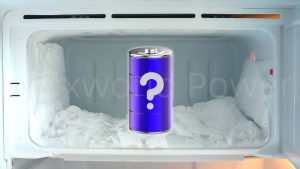Most effective LiFePo4 battery for solar street lights
The batteries in the overall solar street light system are crucial for solar street lights. It collects solar energy during the day, stores it, and releases it at night or when the light is inadequate to power the solar street lights. The battery lifetime, depth of depletion, and maintenance needs are the three most crucial battery parameters. The overall solar street light system’s quality and cost are directly influenced by its quality and cost. Therefore, the battery selection is crucial for various plans or types of solar street light systems.

What Sorts Of Solar-Powered Street Lights Are There?
- The conventional split solar street light system, which consists of an LED street light with a separate solar panel and battery, is a distributed power supply system that is independent. The system’s batteries, light sources, solar panels, and other parts operate independently of one another. The storage battery is often mounted on a street lamp pole or buried in the ground.
- Integrated solar street lights, also known as All-in-one solar street lights, are the second kind. It combines all of the system’s necessary elements and components into a single lamp body, making installation a breeze.
- All-in-two solar streetlights are a variant of incorporated street lights that make up the third category. The lithium battery and solar control are mostly integrated within the body of the LED street light in this type of lighting, but there is also an external solar panel.
Certain solar street lights come standard with Lead/VRLA/AGM batteries. Lithium batteries’ total cost of ownership (TCO), despite initially appearing to be higher, is significantly higher than that of lithium batteries.
Why do we select lithium batteries over lead-acid batteries, then?
Flexibility
The same lead-acid battery has a big volume, hefty weight, and low energy density. The lithium battery is portable, lightweight, and tiny in size. The weight and capacity of lithium batteries are roughly one-third that of lead-acid gel batteries and lithium-ion energy storage systems, which are both employed in solar street lights. As a consequence, transportation is more convenient and less expensive.
Durability
Higher energy density and a longer useful life can be found in lithium batteries. The lithium battery has a cycle life of more than 2500 cycles, compared to the lead-acid battery’s 800 cycles; the lithium battery’s energy density is about 150 Wh/kg, compared to the lead-acid battery’s 40 Wh/kg; the lithium battery can be fully charged in 4 hours, whereas the lead-acid battery is typically fully charged in 6 hours
Accessibility
Lithium battery-powered solar street lights are simple to install. The battery must be fixed on the bracket using a hanging type or a built-in type, or it must be placed in the ground box to seal it when installing typical solar street lights. A battery pit must be set aside for this purpose.
Then, maintaining and replacing is easy. In contrast to traditional solar street lights, which require digging out subterranean batteries during maintenance, lithium-ion solar street lights just require the removal of the battery from the pole or battery panel.
Efficiency
Better electrical energy efficiency is achieved during lithium battery charge and discharge, while the lead-acid battery charge and discharge conversion effectiveness is only about 80%. A lithium battery has a volume that is equivalent to a lead-acid battery. A lithium-ion battery is compact, with a volume that is about 2/3 that of a lead-acid battery.
We prefer LiFePO4 (LFP) batteries for solar streetlights for what reasons?
Solar energy and solar battery storage are utilized to power or support a variety of contemporary technologies nowadays. They have relied on lead-acid (AGM) batteries for many years, they have relied on lead-acid (AGM) batteries, although lithium iron phosphate batteries are now a major player.
To maintain reliability, AGM battery systems need to be replaced once a year. AGM battery replacement typically costs more to labor than the actual cost of the battery, particularly in Australia, Europe, North America, and other regions. It is impossible to overlook the dangers and consequences of frequent battery replacement.
Conclusion
The particulars of the client or project will determine which battery solar street light to select. combining the many benefits and drawbacks of the aforementioned batteries. The following is a shopping guide for solar street light batteries:
Solar streetlights withLiFePO4 batteries are the best if the ambient temperature where you use them is relatively high, such in Africa, the Middle East, Southeast Asia, and other locations.
The 12.8V 11.1V battery pack is a prerequisite if you want solar street lights to provide long-term lighting demands. You are welcome to get in touch with us if you need help deciding which solution is ideal for you or your projects. We will provide you the top options.






